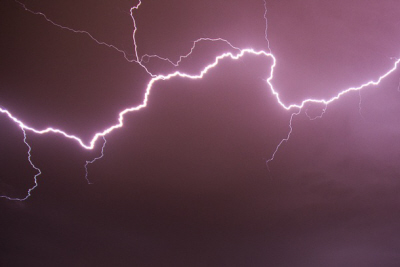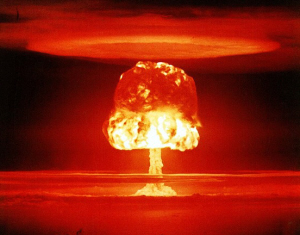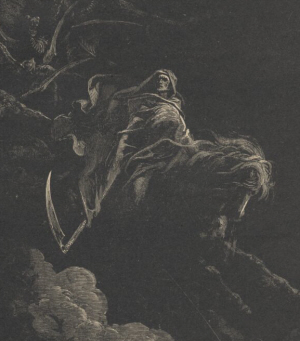
Rethinking Revelation (Part One)
Eight Challenges for Traditional Perspectives (Part One)
When I came to the book of Revelation, I didn’t even try to study it. In place of the careful, word-by-word or phrase-by-phrase exegesis that I enjoy, I simply read through the book multiple times, taking a few notes here and there, and then read a summary of the different views on Revelation.
I wasn’t intending to come to any conclusions about the book of Revelation, so I surprised myself when I finished my overview with eight conclusions that defy traditional perspectives. Still, these eight conclusions fall far short of a clear eschatology. I still fit within the pan-millenial viewpoint – everything will ‘pan out’ for God’s people!
So, admitting that I still have plenty to learn, I humbly offer these eight conclusions for you to consider – and perhaps, an attitude of humility toward difficult subjects will create more common ground than a strict theology of the end times!
#1 – Revelation should be approached with an attitude of humility, not certainty.
I have yet to hear a viewpoint that clearly explains everything in the book of Revelation, though I think that some come closer to doing so than others. Without solid, verifiable arguments, Christians need to hold their views on the last times with less certainty.
There are some things that we can be sure of – that Christ is coming again, that heaven and hell are real, that eternal judgment is certain – but most of the eschatological theories are based on plenty of uncertainties.
As an example of the uncertainty that clouds the end times, consider this. When speaking of the signs of the times, Jesus says, ‘all these [wars, rumors of wars, famines, earthquakes, etc.] will happen, but the end is not yet.’ We think that when all these signs appear, the end is here! But he says, the end is not yet.
Or take this example: some places in the Bible seem to speak of Christ coming when there are wars, tumults, rebellions, and horrible events taking place on earth. But in some parts of the Bible, we get the sense that mankind is dwelling securely, seeming to have attained ‘utopia’ (as evidenced by the phrase ‘when they say, “peace and safety,” then cometh the sword) when Christ suddenly appears. Which one is a more accurate description? At present, we don’t know.
#2 – ‘The signs of the times’ apply to the last days – from the apostles until now!
How many times have you heard that ‘the end is near?’ The unravelling world, the rise of anti-Christian world leaders, and the rejection of Biblical truth are pointed to by frantic believers and non-believers alike. They warn us to prepare: the end is very near.
Are they correct? Absolutely! Jesus says in Revelation 22:7, “Behold, I come quickly.” All throughout the Bible, the coming of Jesus is described as an event that will take place soon. Of course, Peter reminds us that the Lord’s definition of ‘soon’ may be different than our definition (2 Peter 3:8-9).
We can agree that Jesus is coming back soon, and the last times are upon us. And we could agree on this ever since the time of the apostles. That is where most people disagree. They say that something is special about this time, these last five, ten, or fifteen years, that makes this the end, more than ever before.
 It is true that all the ‘signs’ of the end times are present today. Wars (in Iraq, Syria, and Afghanistan), famines (in Somalia), rumors of wars (in the Ukraine, Korea), plagues and pestilences (Ebola, Zika Virus, and Avian Flu), earthquakes (in Nepal), and persecution (in Iran, Sudan, China, and India, to name a few places) all run rampant.
It is true that all the ‘signs’ of the end times are present today. Wars (in Iraq, Syria, and Afghanistan), famines (in Somalia), rumors of wars (in the Ukraine, Korea), plagues and pestilences (Ebola, Zika Virus, and Avian Flu), earthquakes (in Nepal), and persecution (in Iran, Sudan, China, and India, to name a few places) all run rampant.
But this is nothing new. It has been happening ever since the time of the apostles. Today we imagine that a greater disaster is about to fall on the world than ever before. We are not the first people to imagine such things.
The Black Death (which killed 33-50% of Europe’s population), World War One (which resulted in the death of 16 million combatants and non-combatants), the rise of Ghenghis Khan (who killed up to 40 million people, or 11% of the world population), and the Influenza Pandemic of 1918 (which killed 50-100 million people, or 3-5% of the world population), have all been viewed in apocalyptic terms. Considering their immensity, it is no surprise that people thought the end of the world had arrived. What is surprising is that we have forgotten about them so quickly.
Things are bad – and they always have been. But modern events are not so gloomy that we can’t take hope. Just think about the Reformation. How bad were events at that time? Samuel Eliot Morison, in The Admiral of the Ocean Sea, tells us,
“At the end of the year 1492 most men in Western Europe felt exceedingly gloomy about the future. Christian civilization appeared to be shrinking in area and dividing into hostile units as its sphere contracted. For over a century there had been no important advance in natural science, and registration in the universities dwindled as the instruction they offered became increasingly jejune and lifeless. Institutions were decaying, well-meaning people were growing cynical or desperate, and many intelligent men, for want of something better to do, were endeavoring to escape the present through the study of the pagan past. Islam was now expanding at the expense of Christendom…The Ottoman Turks, after snuffing out all that remained of the Byzantine Empire, had overrun most of Greece, Albania, and Serbia; presently they would be hammering at the gates of Vienna.”
This situation was desperate, but it was not the end of the world. Instead, it was the precursor to an astounding movement of God – a lull before Biblical truth surged forward, and Europe entered into a greater period of glory than ever.
#3 – The seven seals, thunders, vials, and trumpets of Revelation are not separate, but overlapping.
The traditional approach, at least in the last 100-200 years, has been to view Revelation as a strictly chronological book. According to this view, seven events pictured by seven seals occur; then occur seven trumpets, seven thunders,  and seven vials of wrath. This leads to no less than 28 separate events which occur throughout the book – viewed by many as a final period of ‘tribulation.’
and seven vials of wrath. This leads to no less than 28 separate events which occur throughout the book – viewed by many as a final period of ‘tribulation.’
But as Anthony Hoekema notes, there is another approach to the book. “The system of interpretation of the book of Revelation which seems most satisfactory to me (though it is not without its difficulties) is that known as progressive parallelism…According to this view, the book of Revelation consists of seven sections which run parallel to each other, each of which depicts the church and the world from the time of Christ’s first coming to the time of his second.”
I also agree that this method has its difficulties. Still, there is sufficient similarity between the different sets of seven that this view needs to be considered. For example, notice these eight similarities:
- The second trumpet and the second vial both result in the sea turning to blood. Much death results from each event.
- The third trumpet and the third vial both result in the rivers and fountains of water being changed; many men die as a result. Following the trumpet, the water becomes wormwood and is called bitter; following the vial, the water turns to blood.
- The fourth trumpet causes the sun to be darkened, while the fourth vial results in men being scorched by the heat of the sun.
- The fifth trumpet causes smoke to arise out of the bottomless pit, darkening the air. The fifth vial results in the beast’s kingdom being filled with darkness.
- Following the fifth trumpet, a locust-like creature torments men; following the fifth vial, men gnaw their tongues in pain.
- The role of the Euphrates river is featured prominently in both the sixth trumpet and the sixth vial; both of them also speak of a great army.
- It is particularly significant that the seventh seal, the seventh trumpet, and the seventh vial all result in voices, thundering, lightening, and an earthquake, while a great hail is also mentioned following the seventh trumpet and the seventh vial.
- There is a defining sense of finality that is curiously depicted after the seventh trumpet and the seventh vial.
While these eight similarities do not ‘prove’ that there is overlap between the plagues in Revelation, they do challenge the idea that the events are strictly chronological, completely separate from each other.
#4 – There may be significant chronological ‘gaps’ between the individual seals, trumpets, thunders, and vials.
In keeping with the view of a ‘great tribulation,’ it is common to view the great plagues of Revelation as occurring almost simultaneous – one after another, like a prolonged burst of machine-gun fire. While this is a possible interpretation, there is nothing to indicate that this must be.
Why could there not be several hundred years between each? These plagues may indicate major and earth-shaking calamities, so significant in the history of the world that they are highlighted in prophecy.
Looking back, we can see some periods characterized by a level of suffering and horror almost nightmarish to behold (black death, Ghenghis Khan, etc.). Perhaps these were individual vials being poured out, though we are unlikely to know certainly until the coming of Christ.




Good job Daniel. I totally agree.